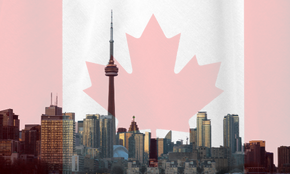IELTS Vocabulary List 3
Boost Your IELTS Prep with our Comprehensive IELTS Vocabulary List
IELTS VOCABULARY LIST 3
This article offers a comprehensive IELTS Vocabulary List that contains words and sentences associated with the following themes
TABLE OF CONTENT
Other IELTS Vocabulary Lists Based on Themes
41. Robotics:
- Automation: The use of technology to perform tasks with minimal human intervention. Automation has revolutionized industries, increasing efficiency and productivity.
- Artificial Intelligence: The simulation of human intelligence processes by machines, especially computer systems. Advances in artificial intelligence have led to significant breakthroughs in robotics and automation.
- Machine Learning: A subset of AI that enables computer systems to learn from data and improve performance without being explicitly programmed. Machine learning algorithms power various robotic applications, from autonomous vehicles to medical diagnostics.
- Robotics: The interdisciplinary field involving the design, construction, and operation of robots. Robotics encompasses a wide range of applications, including manufacturing, healthcare, and exploration.
- Cybernetics: The study of communication and control systems in living organisms and machines. Cybernetics principles are integral to the development of advanced robotics and autonomous systems.
42. Crime and Punishments:
- Crime: An act or omission that violates the law and is punishable by the state. Crime rates vary across regions and can have significant social and economic implications.
- Punishment: The consequences imposed by authorities for committing a crime. Punishment aims to deter criminal behavior, rehabilitate offenders, and maintain social order.
43. Legal Systems:
- Civil Law: A legal system based on written laws or codes that define rights, duties, and liabilities of individuals and organizations. Civil law systems are prevalent in many countries, including France and Germany.
- Common Law: A legal system based on precedents and judicial decisions that interpret statutes and principles. Common law systems, found in countries like the United States and the United Kingdom, emphasize case law and legal reasoning.
- Criminal Law: The branch of law that deals with offenses against the state and prescribes punishment for criminal acts. Criminal law encompasses a range of offenses, from minor infractions to serious felonies.
- Legal Jurisdiction: The authority of a court or legal system to hear and decide legal cases within a defined geographic area or subject matter. Legal jurisdiction ensures that legal matters are adjudicated according to applicable laws and regulations.
- Judicial System: The branch of government responsible for interpreting and applying laws through courts and judicial processes. Judicial systems uphold the rule of law and ensure access to justice for citizens.
44. Humanitarian Aid:
- Disaster Relief: Assistance provided to communities affected by natural or man-made disasters such as earthquakes, floods, or conflicts. Disaster relief efforts aim to address immediate needs, including food, shelter, and medical care, for affected populations.
- Refugee Assistance: Support and protection offered to refugees who have fled their home countries due to persecution, conflict, or violence. Refugee assistance programs provide essential services and resources to help displaced individuals rebuild their lives.
- Medical Aid: Healthcare services and supplies provided to communities in crisis or underserved regions. Medical aid organizations deliver emergency medical care, vaccinations, and health education to improve health outcomes and save lives.
- Food Security: Ensuring access to nutritious food for vulnerable populations, particularly in areas affected by poverty, conflict, or environmental disasters. Food security programs promote sustainable agriculture, distribution networks, and food assistance initiatives.
- Development Assistance: Support for long-term development projects aimed at reducing poverty, promoting education, and improving living standards in disadvantaged communities. Development assistance fosters sustainable development and resilience to future crises.
45. International Relations:
- Diplomacy: The practice of managing international relations through negotiation, dialogue, and compromise. Diplomacy aims to maintain peaceful relations between nations and resolve conflicts through diplomatic channels.
- Foreign Policy: A government's strategy and approach to dealing with other countries and international issues. Foreign policy objectives may include promoting national interests, fostering alliances, and advancing diplomatic initiatives.
- Globalization: The process of increasing interconnectedness and integration among countries, economies, and societies worldwide. Globalization influences international relations by facilitating trade, communication, and cultural exchange.
- Multilateralism: Cooperation among multiple countries or international organizations to address global challenges and pursue common goals. Multilateralism strengthens collective security, promotes economic cooperation, and fosters global governance.
- International Organizations: Institutions established to facilitate cooperation and coordination among countries on various issues, such as the United Nations, World Bank, and World Trade Organization. International organizations play a crucial role in shaping international relations and addressing global challenges.
46. Trade and Commerce:
- Import: The purchase of goods or services from foreign countries for domestic use or resale. Imports contribute to consumer choice, economic growth, and international trade.
- Export: The sale of goods or services produced domestically to foreign markets. Exports generate revenue, create jobs, and stimulate economic development.
- Tariff: A tax or duty imposed on imported or exported goods, typically to protect domestic industries or generate revenue for the government. Tariffs influence trade flows, prices, and market competitiveness.
- Free Trade: The unrestricted exchange of goods and services between countries without tariffs, quotas, or trade barriers. Free trade promotes economic efficiency, specialization, and consumer welfare.
- Global Supply Chain: The network of interconnected suppliers, manufacturers, distributors, and retailers involved in producing and delivering goods and services to consumers worldwide. Global supply chains optimize production, reduce costs, and enhance competitiveness in the global market.
47. Economic Development:
- Gross Domestic Product (GDP): The total monetary value of all goods and services produced within a country's borders in a specific period. Gross Domestic Product (GDP) is a key indicator of economic performance and growth.
- Infrastructure: The basic physical and organizational structures and facilities needed for the operation of a society or enterprise, such as transportation systems, communication networks, and utilities. Infrastructure investments stimulate economic development and improve quality of life.
- Foreign Direct Investment (FDI): Investment made by a company or individual in one country in business interests in another country, typically through the establishment of business operations or the acquisition of assets. Foreign direct investment (FDI) contributes to economic growth, job creation, and technology transfer.
- Poverty Alleviation: Efforts to reduce or eradicate poverty through various means, including income support, social welfare programs, education, and employment opportunities. Poverty alleviation initiatives aim to improve living standards and promote inclusive economic growth.
- Sustainable Development: Development that meets the needs of the present without compromising the ability of future generations to meet their own needs. Sustainable development balances economic growth, environmental protection, and social equity to ensure long-term prosperity.
48. Monetary Policy:
- Central Bank: A financial institution responsible for regulating a country's monetary policy, controlling the money supply, and overseeing the banking system. Central banks implement monetary policy tools to achieve economic objectives such as price stability, full employment, and economic growth.
- Interest Rate: The cost of borrowing money or the return on investment expressed as a percentage of the principal amount. Interest rates influence consumer spending, investment decisions, and inflationary pressures.
- Inflation Targeting: A monetary policy framework where central banks set explicit targets for inflation rates and adjust policy instruments to achieve those targets. Inflation targeting aims to maintain price stability and anchor inflation expectations.
- Quantitative Easing (QE): A monetary policy tool used by central banks to stimulate the economy by purchasing government securities or other financial assets. Quantitative easing increases the money supply, lowers interest rates, and boosts lending and investment.
- Exchange Rate: The value of one currency in terms of another, determined by supply and demand in the foreign exchange market. Exchange rates affect international trade, capital flows, and competitiveness of domestic industries.
49. Banking and Finance:
- Commercial Bank: A financial institution that provides a range of banking services to individuals, businesses, and governments, including accepting deposits, granting loans, and facilitating transactions. Commercial banks play a crucial role in the economy by channeling funds between savers and borrowers.
- Investment Bank: A financial institution that assists corporations, governments, and institutional investors in raising capital through underwriting and advisory services, such as mergers and acquisitions, debt and equity offerings, and financial restructuring. Investment banks facilitate capital formation and financial transactions in the capital markets.
- Financial Markets: Platforms or exchanges where buyers and sellers trade financial assets such as stocks, bonds, currencies, and commodities. Financial markets provide liquidity, price discovery, and capital allocation functions in the economy.
- Asset Management: The professional management of investment portfolios on behalf of individual investors, institutions, and funds. Asset management firms offer a range of investment products and services, including mutual funds, exchange-traded funds (ETFs), and pension funds.
- Risk Management: The process of identifying, assessing, and mitigating risks associated with financial transactions, investments, and operations. Risk management techniques help financial institutions and investors minimize potential losses and protect against adverse events.
50. Stock Market:
- Stock Exchange: A regulated marketplace where securities such as stocks, bonds, and derivatives are bought and sold by investors. Stock exchanges provide liquidity, transparency, and price discovery mechanisms for trading financial assets.
- Stock Index: A statistical measure that tracks the performance of a specific group of stocks representing a particular market or sector. Stock indices, such as the S&P 500 or Dow Jones Industrial Average, serve as benchmarks for evaluating market trends and investment returns.
- Stock Broker: A licensed professional or firm that facilitates the buying and selling of securities on behalf of investors in the stock market. Stock brokers execute trades, provide investment advice, and manage client accounts.
- Market Volatility: Fluctuations in stock prices and market conditions characterized by rapid or unpredictable changes in asset values. Market volatility can present opportunities for traders and investors but also increases risk and uncertainty.
- Initial Public Offering (IPO): The process by which a private company offers its shares to the public for the first time, raising capital from investors and becoming a publicly traded entity. IPOs provide companies with access to additional funding and liquidity for shareholders.
51. Healthcare Systems:
- Universal Healthcare: A healthcare system that provides medical services and coverage to all residents of a country, regardless of their ability to pay. Universal healthcare aims to ensure equitable access to healthcare services and improve population health outcomes.
- Primary Care: The first point of contact for individuals seeking healthcare services, typically provided by general practitioners, family physicians, and other healthcare professionals. Primary care emphasizes preventive care, health promotion, and management of common illnesses.
- Health Insurance: A financial mechanism that provides coverage for medical expenses, including hospitalization, medications, and preventive care. Health insurance helps individuals and families manage healthcare costs and access necessary medical services.
- Public Health: The science and practice of promoting and protecting the health of populations, including disease prevention, health promotion, and health policy development. Public health initiatives address social determinants of health and aim to improve population health and well-being.
- Healthcare Infrastructure: The physical and organizational structures, facilities, and resources that support the delivery of healthcare services, including hospitals, clinics, laboratories, and healthcare workforce. Healthcare infrastructure plays a critical role in ensuring access to quality healthcare for communities.
52. Mental Health Awareness:
- Stigma: Negative attitudes, stereotypes, and discrimination associated with mental illness or seeking mental health treatment. Stigma contributes to social isolation, reluctance to seek help, and barriers to accessing mental health services.
- Mental Health Advocacy: Efforts to raise awareness, promote understanding, and advance policies and initiatives that support mental health and well-being. Mental health advocacy aims to reduce stigma, increase access to care, and improve mental health outcomes.
- Therapy: A form of treatment that involves talking with a trained therapist or counselor to address emotional, psychological, or behavioral issues. Therapy can help individuals develop coping skills, improve relationships, and manage mental health symptoms.
- Self-Care: Practices and activities individuals engage in to promote mental and emotional well-being, such as exercise, mindfulness, relaxation techniques, and hobbies. Self-care is an important aspect of maintaining mental health and preventing burnout.
- Support Groups: Peer-led or professionally facilitated groups where individuals with similar experiences come together to share support, coping strategies, and resources related to mental health challenges. Support groups provide a sense of belonging, validation, and encouragement for recovery.

53. Nutrition and Dietetics:
- Nutrients: Substances found in food that are essential for growth, development, and overall health. Nutrients include carbohydrates, proteins, fats, vitamins, and minerals, among others.
- Balanced Diet: A diet that provides the necessary nutrients in appropriate proportions to meet an individual's nutritional needs and maintain optimal health. Balanced diets promote overall well-being and reduce the risk of chronic diseases.
- Calorie Intake: The amount of energy obtained from food and beverages consumed daily, measured in calories. Calorie intake should be balanced with energy expenditure to maintain a healthy weight and prevent weight-related health issues.
- Nutritional Deficiency: A condition resulting from inadequate intake or absorption of essential nutrients, leading to impaired growth, development, and health. Nutritional deficiencies can cause a range of health problems, including anemia, osteoporosis, and compromised immune function.
- Dietary Guidelines: Evidence-based recommendations issued by health authorities to promote healthy eating habits and prevent chronic diseases. Dietary guidelines provide guidance on food choices, portion sizes, and meal planning for individuals and populations.
54. Exercise and Fitness:
- Physical Activity: Any bodily movement that requires energy expenditure, including walking, running, cycling, and sports. Physical activity is essential for maintaining health, improving fitness, and preventing chronic diseases.
- Cardiovascular Exercise: Activities that increase heart rate and promote cardiovascular health, such as jogging, swimming, and cycling. Cardiovascular exercise strengthens the heart and lungs, improves circulation, and enhances endurance.
- Strength Training: Resistance exercises that target specific muscle groups to increase muscle strength, endurance, and mass. Strength training activities include weightlifting, bodyweight exercises, and resistance band workouts.
- Flexibility: The ability of joints and muscles to move through their full range of motion without pain or stiffness. Flexibility exercises, such as stretching and yoga, improve mobility, posture, and muscle elasticity.
- Physical Fitness: The overall health and ability to perform daily activities with vigor and without undue fatigue. Physical fitness encompasses cardiovascular endurance, muscular strength, flexibility, and body composition.
55. Sportsmanship:
- Fair Play: Conducting oneself in a respectful and honorable manner while participating in sports, adhering to the rules and spirit of the game. Fair play promotes integrity, sportsmanship, and mutual respect among athletes.
- Teamwork: Collaboration and cooperation among individuals working together towards a common goal in sports. Teamwork fosters camaraderie, unity, and collective success on and off the field.
- Respect: Showing consideration, admiration, and esteem for opponents, teammates, officials, and the game itself. Respect is fundamental to sportsmanship and creates a positive and inclusive sporting environment.
- Good Sportsmanship: Behaving with integrity, humility, and grace, regardless of winning or losing, in victory or defeat. Good sportsmanship emphasizes sportsmanlike conduct, humility in victory, and graciousness in defeat.
- Ethical Behavior: Acting in accordance with moral principles and values, such as honesty, fairness, and accountability, in sports. Ethical behavior upholds the integrity of the game and builds trust among participants and stakeholders.
56. Adventure Travel:
- Exploration: Traveling to unfamiliar or remote destinations in search of new experiences, challenges, and discoveries. Exploration allows travelers to broaden their horizons, immerse themselves in different cultures, and push personal boundaries.
- Outdoor Activities: Recreational pursuits and adventures undertaken in natural environments, such as hiking, camping, kayaking, and rock climbing. Outdoor activities provide opportunities for adventure, adrenaline, and connection with nature.
- Ecotourism: Responsible travel to natural areas that conserves the environment, sustains local communities, and promotes environmental education and cultural understanding. Ecotourism supports conservation efforts, biodiversity protection, and sustainable development.
- Risk Management: Assessing and mitigating potential hazards and challenges associated with adventure travel, such as extreme weather, wildlife encounters, and physical exertion. Risk management strategies ensure traveler safety and minimize adverse impacts on the environment and local communities.
- Cultural Immersion: Engaging with local cultures, traditions, and communities while traveling, fostering cross-cultural exchange, understanding, and appreciation. Cultural immersion enriches travel experiences and promotes cultural diversity and respect.
57. Ecotourism:
- Biodiversity: The variety and abundance of living organisms within a particular habitat or ecosystem. Biodiversity conservation is a key objective of ecotourism, aiming to protect and preserve fragile ecosystems and species.
- Sustainable Tourism: Travel and tourism activities that minimize negative impacts on the environment, support local communities, and promote conservation efforts. Sustainable tourism practices ensure the long-term viability of natural and cultural resources.
- Wildlife Conservation: Efforts to protect and preserve wild animal species and their habitats from threats such as habitat loss, poaching, and climate change. Wildlife conservation initiatives enhance biodiversity, ecological balance, and ecosystem resilience.
- Nature Reserves: Protected areas designated for the conservation and management of natural habitats, landscapes, and wildlife. Nature reserves provide opportunities for ecotourism activities such as wildlife viewing, birdwatching, and nature walks.
- Community Engagement: Involving local communities in ecotourism planning, decision-making, and benefits-sharing to ensure their participation and empowerment. Community engagement fosters sustainable development, cultural preservation, and socio-economic benefits for residents.
58. Cultural Heritage:
- Historical Sites: Places of cultural, historical, or archaeological significance that preserve and showcase the heritage and traditions of past civilizations. Historical sites include landmarks, monuments, ruins, and artifacts that provide insights into human history and cultural evolution.
- Cultural Preservation: Efforts to safeguard and promote the traditions, languages, customs, and artifacts of a particular culture or community. Cultural preservation ensures the continuity and resilience of cultural heritage for future generations.
- Heritage Conservation: The protection and management of cultural and natural heritage sites, landscapes, and resources to maintain their integrity, authenticity, and value. Heritage conservation involves restoration, maintenance, and interpretation of heritage assets.
- Intangible Cultural Heritage: Traditions, rituals, knowledge, and skills passed down through generations within communities, including oral traditions, performing arts, and craftsmanship. Intangible cultural heritage enriches cultural diversity and fosters social cohesion and identity.
- Cultural Exchange: Interactions, collaborations, and sharing of cultural practices, ideas, and experiences among individuals, communities, and societies. Cultural exchange promotes mutual understanding, tolerance, and appreciation of diverse cultural expressions.
59. Literary Works:
- Novel: A fictional narrative prose work of significant length, typically focusing on character development, plot, and themes. Novels encompass various genres, including romance, mystery, science fiction, and historical fiction.
- Poetry: Literary works characterized by the use of rhythmic language, imagery, and symbolic expression to evoke emotions and convey ideas. Poetry includes various forms such as sonnets, haiku, free verse, and epic poetry.
- Drama: Literary works intended for performance, featuring dialogue, action, and conflict to explore human experiences and emotions. Drama encompasses plays, scripts, and theatrical productions that entertain and provoke thought.
- Short Story: A brief fictional prose narrative focusing on a single incident, character, or theme, often with a surprise ending or twist. Short stories offer concise storytelling and are popular in literary magazines, anthologies, and online platforms.
- Classic Literature: Literary works of enduring significance and cultural value, recognized for their artistic merit, thematic depth, and influence on subsequent generations. Classic literature includes timeless works by authors such as Shakespeare, Dickens, Austen, and Tolstoy.
60. Performing Arts:
- Theater: Live performances of dramatic works, including plays, musicals, and performances by actors, dancers, and musicians. Theater engages audiences through storytelling, character portrayal, and artistic expression.
- Music: Artistic expression through sound organized in time, encompassing various genres, styles, and forms such as classical, jazz, rock, pop, and folk music. Music evokes emotions, communicates ideas, and reflects cultural traditions.
- Dance: Expressive movement and choreography performed rhythmically to music or in response to sound, often conveying emotions, stories, or cultural rituals. Dance encompasses diverse styles such as ballet, hip-hop, contemporary, and traditional folk dances.
- Opera: A theatrical performance combining music, singing, acting, and visual elements to tell stories through dramatic and musical means. Opera features vocal performances accompanied by orchestral music and elaborate stage productions.
- Live Performance: Artistic presentations and entertainment events presented in real-time before a live audience, including concerts, theater productions, dance recitals, and comedy shows. Live performances create shared experiences and cultural connections among performers and audiences.
IELTS TRAINING FROM GRAD-DREAMS:
Comprehensive Curriculum: Our program covers all aspects of the IELTS exam, emphasizing grammar, vocabulary, and exam-specific strategies.
Personalized Instruction: Students receive tailored guidance and support from experienced instructors in small class sizes.
Interactive Classes: Engaging activities and innovative teaching methods foster active learning and participation.
Practice Tests and Feedback: Mock exams and detailed feedback sessions help students track progress and address weaknesses.
Achievement and Success: Our goal is to empower students to achieve their desired IELTS scores and fulfill their academic and professional aspirations.
Online Class: You can take the class online from the comfort of your home. Unlike other classes, you won't be watching pre-recorded videos but will have proper teacher-assisted online training that is interactive and dedicated according to the student's learning speed and need.
BOOK A FREE DEMO WITH US NOW
Other IELTS Vocabulary Lists Based on Themes
The following resources will give 500+ different words based on 100 themes, with meanings and sentences to show the usage of the vocabulary.
IELTS VOCABULARY LISTS ( Resource for 500+ IELTS words, tips, and strategies for IELTS Vocabulary)
Ask Your Question


Evaluate your profile for Bachelors, Masters & PhD Programs, to Study Abroad.
Take the First Step Towards Your Global FutureCheck the downloadable guides!!

STUDY-IN-USA-Guide

STUDY-IN-UK-Guide

STUDY-IN-CANADA-Guide








































































































